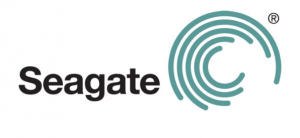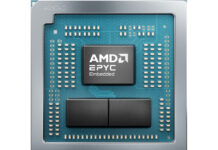Two big technological advancements occurred this week, with Intel announcing 22nm 3D transistors and Seagate announcing 1TB 3.5″ disk platters. Both announcements will yield power consumption savings will boosting performance of their respective devices.
Intel Announces 3D transistors for 22nm Ivy Bridge CPUs
Traditional transistors work much like a highway with a bridge. Traffic (e.g. electrons) can travel atop the asphalt but if the bridge is up, traffic stops. What this practically means in the context of the Intel announcement is that transistors up to this point have followed this model. With today’s announcement, Intel is showing off a technology that allows for three (potentially more at some point) distinct flows of traffic to flow through one line on the chip with three different gates along the same line. The significance here is that along with the 22nm process jump, Intel is introducing a technology that will make transistors more dense than a normal process shrink. Claims are of less power and higher frequencies. While we are accustomed to seeing semiconductor announcements for smaller processes and very futuristic processes, this is a process shrink with a major manufacturing advancement that will hit the marketplace in less than 6 months.
The impact here is that AMD is moving to the 32nm manufacturing process this summer and is unlikely to be totally off of 45nm before Intel introduces 22nm lithography, with 3D transistors. For AMD, this may prove to be devastating if Intel can ramp production quickly as Intel’s chips can be faster while using less power and being less costly to produce.
Seagate Announces 1TB platters: 4TB Drives Are Coming
 On the hard drive front, Seagate announced 1TB platters this week. Today’s 3TB drives are four platter designs which is significant because typically the number of platters influences the cost of the drives, the power consumption and to some extent speed. Speed can be increased with higher-density platters because data becomes more dense on the drives making more data pass under the drive head during a period of time at a given RPM. Seagate has stated densities of well over 600BB/ sq. in.
On the hard drive front, Seagate announced 1TB platters this week. Today’s 3TB drives are four platter designs which is significant because typically the number of platters influences the cost of the drives, the power consumption and to some extent speed. Speed can be increased with higher-density platters because data becomes more dense on the drives making more data pass under the drive head during a period of time at a given RPM. Seagate has stated densities of well over 600BB/ sq. in.
Beyond three platter 3TB drives, 1TB platters allow for drive manufacturers to use four platters for 4TB drives. I would be willing to guess that we will see 4TB drives in the next few months. Also, 3TB drives will likely start falling under the $120 mark regularly once 1TB/ platter 3TB drives become widely available.
Feel free to discuss the news on the ServeTheHome.com Forums!



